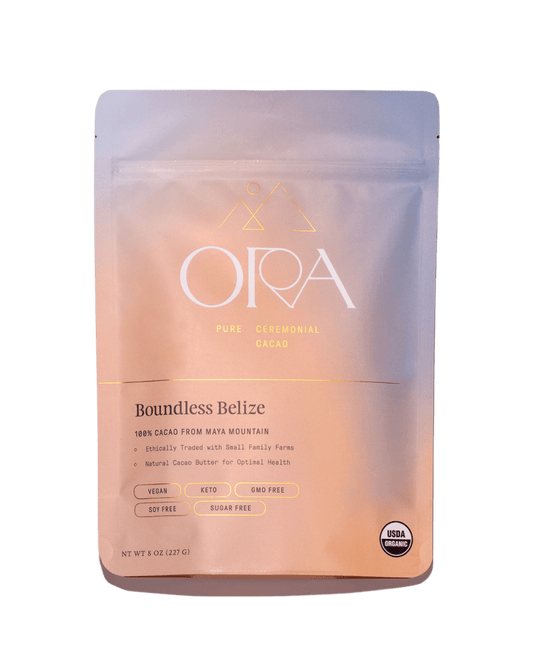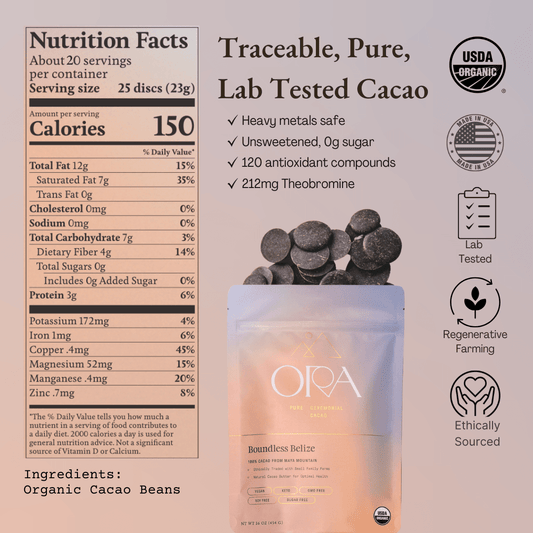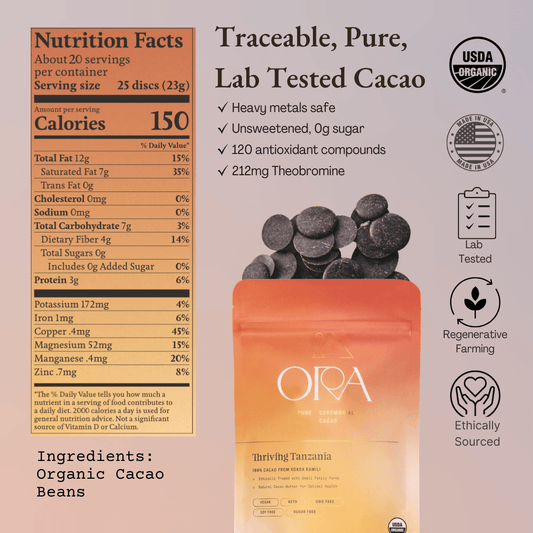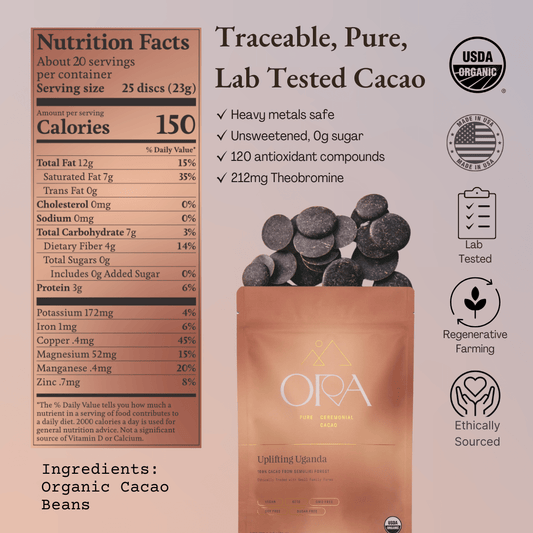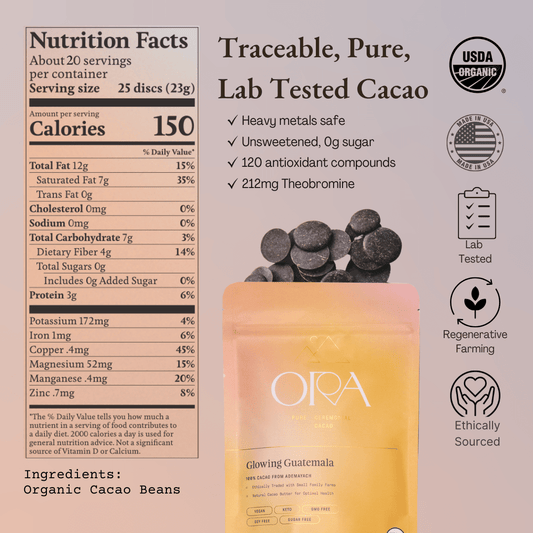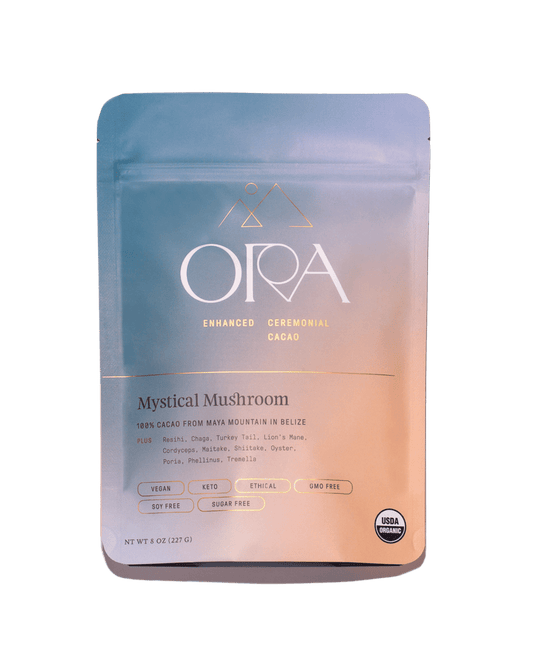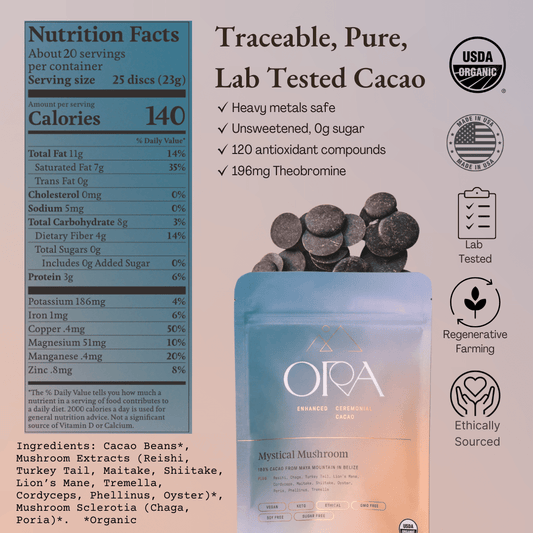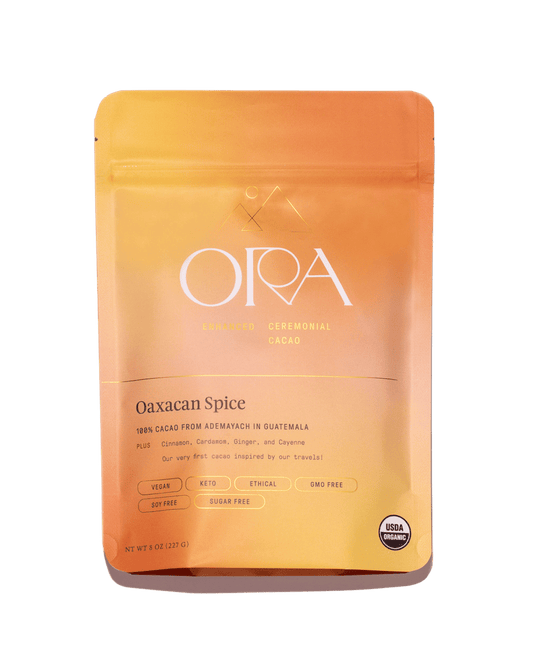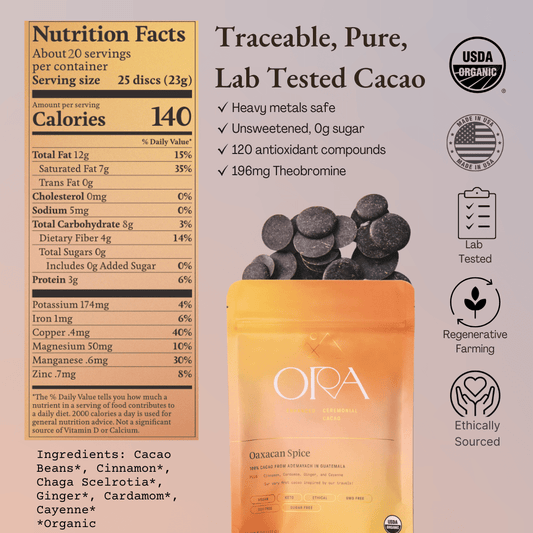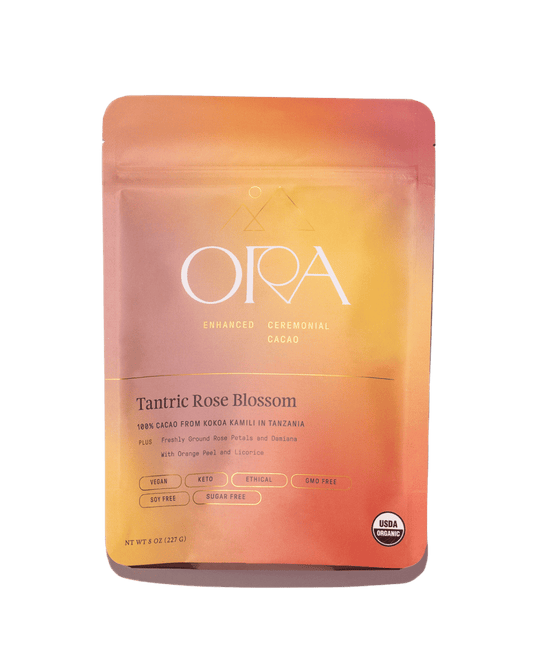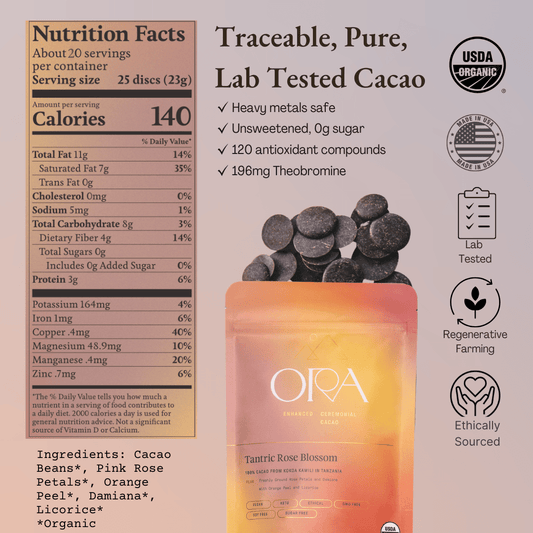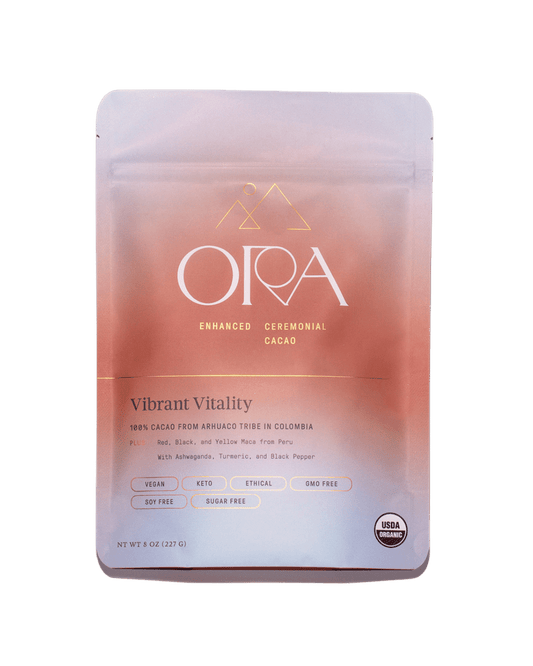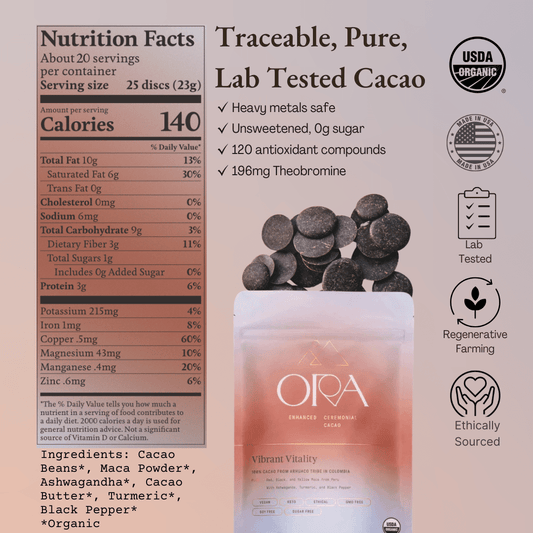Recently we’ve noticed some cacao companies asserting that a swirled or marbled appearance of their cacao product means that it is less processed and therefore higher quality.
While these claims may seem compelling if you’re unfamiliar with the chocolate-making process, they are completely inaccurate.
So we wrote this update for you about the crystallization process of cacao and how our discs are made so that you can discern marketing fluff from truth and real quality.
Shop Ceremonial Cacao
Why Cacao Marbles
To give you some context, here’s a high level overview of how we make Ceremonial Cacao.
- We start by low-temperature roasting cacao beans and then crack and winnow the beans to remove the shells
- We grind these cacao nibs into pure liquid cacao (not a powder – this happens because of the cacao butter content in the bean)
- From there, we further mix and aerate the liquid chocolate which helps with the flavor development by releasing the acetic acid
- Lastly, we temper and cool the liquid cacao into our beautiful and easy to use cacao discs.
To get from liquid cacao to cacao discs is a controlled cooling process called tempering. If you don’t control the process, the natural fat in cacao (aka cocoa butter) forms six different types of crystals as it cools, and you get marbling or swirling.
Think of it like stacking Lego bricks. If you throw them into a pile randomly, you get a messy, unstable structure (bad crystals = streaky, marbled, dull chocolate). But if you stack them neatly and in the right pattern, they lock together perfectly (good crystals = smooth, glossy chocolate).
Only one—the Type V crystal—gives you a shiny, snappy, uniform cacao. Tempering is all about controlling the cooling process so that only Type V crystals form, while preventing the other, less stable ones from taking over. Good tempering creates a smooth, glossy textured cacao without marbling or streaking.
Tempering happens between 80°F and 100°F, just hovering around the melting point of chocolate, which has no negative impact on the medicine of the cacao whatsoever.
The finished presentation of the cacao - whether it is smooth or marbled - has nothing to do with quality. In fact, if it is swirled or marbled it means that it wasn’t cooled with very much attention to detail and presentation.
Shop Ceremonial Cacao
What Actually Makes High Quality Cacao
In our opinion, the four primary determinants of quality for cacao are:
- The quality of the beans - sourcing regenerative, organically farmed cacao from rural communities of small family farms instead of cacao from monoculture plantations.
- Well managed post-harvest fermentation and drying practices that prevent lead contamination and ensure proper flavor development.
- How well the beans are roasted - similar to coffee roasting this is an art form that brings out the complex flavor profile of the beans and it needs to happen at low temperatures to preserve the medicinal components of the cacao.
- Grinding cacao into a uniform texture and smoothness so it melts wonderfully in your mouth without any grittiness.
We hope this information helps you decipher real quality cacao from false marketing claims in the industry.
Feel free to respond back to this email if you have any questions and please do educate your communities on this!


